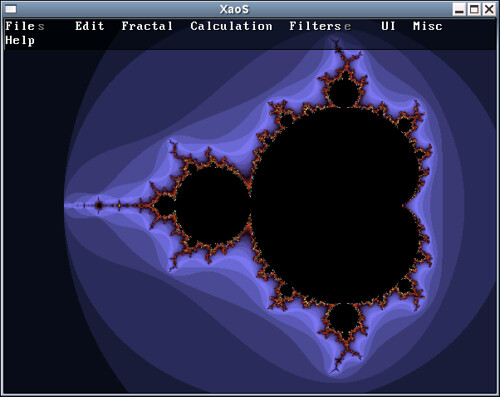Memories of Mandelbrot
| geek, ibm
Image (c) 2007 fsse8info Creative Commons Attribution Copyleft Licence
Benoit Mandelbrot, father of fractals, passed away from pancreatic cancer on October 14, 2010. He was 85 years old.
Fractals made me fall in love with mathematics. I must've come across them in first year high school, training for programming competitions. When we weren't solving problems, we often wrote demo programs to show off what we could do with mathematics, graphics, music, animation, or brute force. One of my team members showed us the Mandelbrot set – beautiful complexity from simple equations. After that, I looked for fractals elsewhere: applications that let you zoom in, animations in the Encarta encyclopedia, the ferns along the path.
Also in high school: on learning that I was interested in fractals, one of my best friends lent me a thick book all about fractals. Partly to impress him (I had a crush on him then, which led to the requisite drama, from which we have thankfully long recovered) and partly for fun, I wrote a Turbo Pascal program that drew several of the fractals described in the book. In fact, it remains my oldest source code still posted on the web (1997), archived by a Russian demo site. Later on, in the breaks between programming contest training sessions, I wrote Lindenmayer system (L-system) evaluators using QBasic so that I could draw binary trees, Koch snowflakes, and Peano curves. When I encountered fractals in fiction – the dragon fractal that iterated through the chapters of Jurassic Park – it was like understanding an in-joke.
Part of the appeal, perhaps, was the combination of limitations and infinities. For example, the Koch snowflake has an infinite perimeter enclosing a finite area. Like the Foxtrot strip where Jason stretches his mind by imagining negative infinity and positive infinity, fractal dimensions boggled me. I loved the feeling. Simple rules belying complexity. And from there it was a short random walk along the chapters and articles to chaos, Lorenz attractors, and butterflies and storms. I may never understand it all fully – but it was reassuring to know that we may never understand it all either.
High school as well, perhaps: I remember a few minutes spent in a bookstore in Hong Kong, hurriedly reading a book on mathematical equations that model nature or produce interesting graphs, hoping I could remember at least a few of the equations from the book by the time I got to a computer. The book was too expensive for me to ask my parents for it on impulse, so I regretfully tucked it back into the crowded bookshelf.
Now, of course, Amazon lists thousands of books about equations and fractals, but I don't know which books were those that tweaked my life to the mathematical inclination. It's okay, I remind myself. It's not important that I have them, and they may not have the same fascination for others.
One last anecdote about fractals; my only anecdote about Benoit Mandelbrot, actually. We were walking through the halls of the IBM research lab I was visiting. Another researcher walked by, nodding. When he was out of earshot, my guide – the awesome Michael Muller – whispered to me, “That was Benoit Mandelbrot.” I was immediately aflutter. I had dimly recalled that computers helped enable the exploration of fractals, but that Benoit Mandelbrot–a figure I had once thought of with the Olympian distance of long-dead science and math heroes like Einstein or Madame Curie–was alive and active, and not only that, he was at IBM… Wow. I wondered if I should run back and ask for his autograph. I didn't – I try not to be distracted by celebrity – but I kept that feeling of wonder as my souvenir.
It was so hard to not just turn around and fangirl.
So I'm doing that now, here.

1 comment
ramon
2010-10-20T23:48:26ZYou must read Complexity by Mitchell Waldrop. It's probably dated and there's got to be some additional insights about Complexity Theory and Non-linear Dynamics.